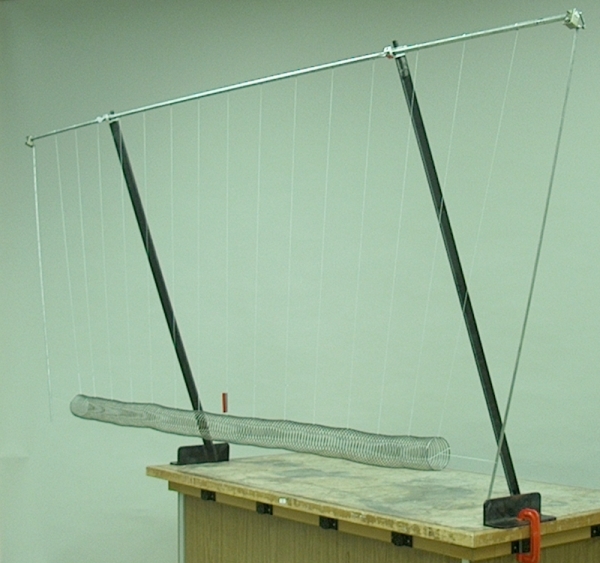
You can generate transverse and longitudinal waves on an approximately five-and-a-half-foot length of suspended Slinky®.
By giving one of the end rods a quick impulse perpendicular to the axis of the Slinky®, you can send a transverse pulse along the slinky, and by giving a quick on-axis impulse, you can send a longitudinal pulse down the slinky. By doing either of these actions periodically, you can send either a transverse or longitudinal wave traveling down the slinky.
The damping introduced by the end rods greatly attenuates reflected pulses. If you wish to show the nature of reflected pulses for either a closed end or an open end, for transverse waves, 40.54 – waves on cord, tubing, spring, 40.60 – transverse wave machine with free or fixed end, and 40.63 – transverse wave machine, all sections, are better. For reflections of a longitudinal pulse, you should use 40.66 – longitudinal wave machine with free or fixed end. The transverse wave machine demonstrations (40.60 and 40.63) also include a dashpot, so that besides showing reflection from an open or closed end, you can also show the effect of damping.